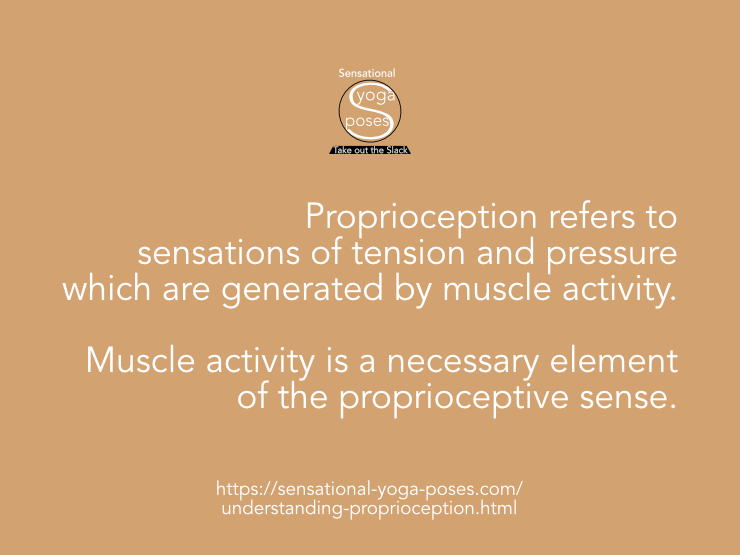Understanding Proprioception
A quick look

Proprioception is the sense of how your body is positioned relative to itself and the world around it.
- It's the ability to feel your body and what it is doing.
- It's a way of sensing what your bodies musculoskeletal system is doing.
Note that there are sensations like hot and cold, emotions, the feeling of a full bladder. All of these are important in their own way and may be categorized under the catchall term interoception. But with regards to moving the body (or holding it still), proprioception refers to sensations of tension and pressure which are, in general, created by changes in muscle activity. And that muscle activity itself is part of the proprioceptive sense.
Proprioception is thus a combination of muscle activation sensation, connective tissue tension and where our body touches or presses down, skin contact and pressure.
I tend to refer to proprioception as "feeling your body" or sensing it. It's important because we can apply it to almost anything that we do.
Breathing Requires Muscular Effort
One of the simplest acts to proprioceive is breathing.
Generally this is thought of as the act of moving air in and out of the lungs. And while there are some breathing exercises that focus on the sensation of air through the air passageways (and even the control of the size of the opening, whether it is the mouth, or the throat, or alternating nostrils), most of what we focus on when breathing is the sensations generated by the activation and relaxation of our respiratory muscles.
Breathing is an act of muscular control.
And one of the reasons that it can be used as a stepping stone to meditation, or as an actual meditation, is that it focuses your attention on what is happening now. Each time your breathing muscles contract and relax they create changes in sensation. Those changes in sensation give you something to focus on. They also help your sense of proprioception. Muscle activity helps you to feel your breath.
Proprioception and Costal Breathing
If you do easy breathing or costal breathing using a combination of spinal erectors and intercostal muscles, you can bend your spine backwards and open your chest to inhale. The spinal erectors create sensation at the back of your spine while your intercostals create sensation between your ribs giving your ribcage "feeling". And if your lumbar spine is also extended (bent backwards) you may find that tension is added to the waist (connective tissue tension) that gives your waist "feeling" also.
All of these sensations can be used as proprioceptive information.
Proprioception and Diaphragmatic Breathing
In alternated diaphragmatic/transverse abdominus breathing the respiratory diaphragm contracts while the transverse abdominis relaxes during an inhale and the opposite occurs during an exhale.
The diaphragm is a hard muscle to feel but its actions can be inferred by the expansion of your belly so that you look pregnant.
This has a distinct sensation and when you experience it you know your belly is expanded and with a bit of practice you can feel the downward contraction of your diaphragm.
The connective tissue network of the body (as well as the pressure network) is directly affected by changes in tension.
This same activation creates muscle activation/relaxation sensation, (the feeling of muscle contraction) and connective tissue tension (more noticeable where there is a lack of muscle contraction sensation.)
Both of these sensations create proprioception, an awareness of the body and an awareness of how it is predisposed in space.
Sensing Your Bones
Because muscles are separated by joints and bones, muscle activity can give a sense of where bones are located. A sort of inferred sense.
As an example, if you activate your quadriceps, the feeling is more towards the front of the thigh. Activate your hamstrings and the feeling generated is more to the rear. Activate both together and you get sensation at the back and front of the thigh and perhaps a sense of where your femur is within that volume of sensation.
Since muscles attach to bones at some point, another way for sensing bone position is to notice the pulling sensation where a muscle attaches to bone.
Published: 2020 08 17
Updated: 2020 10 28



